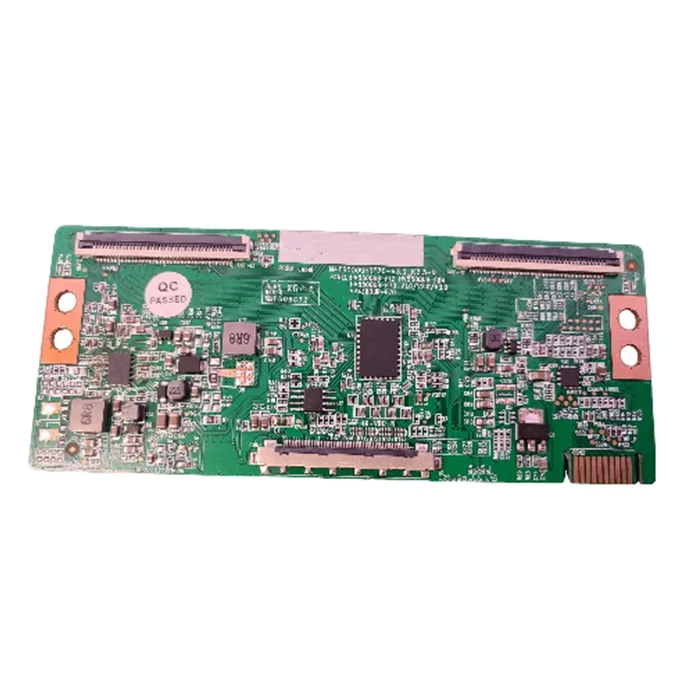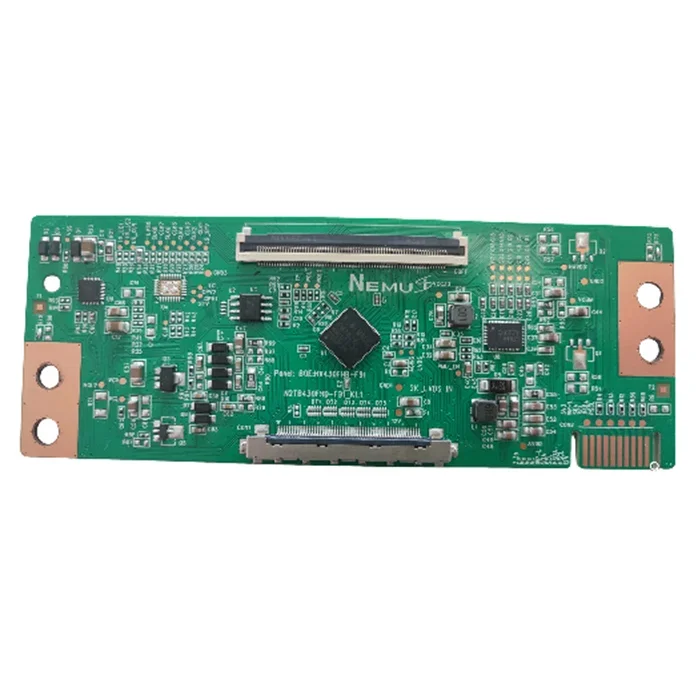In this digital age, we are constantly surrounded by stunning images and graphics that capture our attention. But have you ever wondered what goes on behind the scenes to bring these stunning visuals to life? Now it’s time to delve deeper into the world of LCD logic boards and understand how they play a key role in optimizing image quality.
Whether you're binge-watching your favorite TV series, playing an immersive video game, or just scrolling through your social media feeds, having crystal-clear visuals is crucial to enhancing your viewing experience. This is where the LCD logic board comes into play.
Understanding Image Quality and its Importance
When it comes to visual experiences, image quality plays a crucial role. Whether you're watching a movie, playing video games, or working on graphic design projects, having sharp and vibrant images is essential. But what exactly does image quality mean? And why is it so important?
Image quality refers to the clarity, color accuracy, contrast, and overall visual appeal of an image. It determines how well details are represented and how true-to-life colors appear. A high-quality image will have crisp edges, accurate colors that pop off the screen, and smooth gradients without any pixelation or artifacts.
The importance of image quality can be seen in various aspects of our daily lives. For entertainment purposes like movies and gaming, a poor image quality can greatly diminish the immersive experience. Imagine watching your favorite action-packed film with blurry visuals or playing a game where you struggle to see important details due to low resolution.
In professional settings such as graphic design or photography studios, accurate representation of colors is crucial for creating visually stunning content. A slight variation in color can significantly impact the final outcome of an artwork or photo.
Moreover, in industries like medical imaging or aerospace engineering where precision is paramount, having clear and detailed images can make all the difference when analyzing data or diagnosing critical conditions.

Types of LCD Logic Boards and their Functions
LCD logic boards play a vital role in the overall performance and image quality of liquid crystal display (LCD) screens. These logic boards, also known as T-con boards or timing controllers, are responsible for controlling the flow of data to each pixel on the screen.
There are different types of LCD logic boards available in the market today, each serving specific functions based on the requirements of the display panel. One common type is an LVDS (Low Voltage Differential Signaling) board, which uses differential signals to transmit data from the main control board to the LCD panel. This type of logic board is most commonly found in older LCD displays.
Another type is an eDP (Embedded DisplayPort) board, which utilizes a high-speed serial interface for transmitting video data. This technology offers higher bandwidth and allows for faster refresh rates and higher resolution displays. eDP logic boards are commonly used in modern laptops and monitors.
In addition to these two types, there are also other specialized types of logic boards designed specifically for certain applications such as gaming monitors or medical imaging displays. These boards may have additional features like adaptive sync technologies or color calibration capabilities.
Regardless of their specific functions, all LCD logic boards work together with other components like backlight modules and driver ICs to ensure accurate image reproduction on your screen. The quality and efficiency of these components directly impact factors such as contrast ratio, color accuracy, response time, and viewing angles.
As technology continues to advance at a rapid pace, we can expect further developments in LCD logic board designs that will enhance image quality even more. With advancements like HDR (High Dynamic Range), local dimming zones, and improved color gamut support becoming increasingly popular among consumers today,
How LCD Logic Boards Affect Image Quality
LCD logic boards play a crucial role in determining the overall image quality of an LCD display. These essential components are responsible for processing and transmitting signals from the video source to the various pixels on the screen, ensuring that each pixel displays the correct color and brightness.
The design and functionality of LCD logic boards directly impact several aspects of image quality. One important factor is color accuracy. The logic board's ability to accurately translate digital information into precise analog voltages affects how well colors are displayed on screen. A high-quality logic board can produce vibrant, true-to-life colors, while a subpar one may result in dull or inaccurate hues.
Another key aspect influenced by LCD logic boards is motion handling. Fast-paced scenes or rapid movements require quick signal processing to avoid motion blur or ghosting effects. A well-designed logic board with advanced algorithms can minimize these issues, delivering smoother transitions and sharper images.
Additionally, backlight control is another critical function performed by LCD logic boards. The board regulates the intensity of the backlight behind the display panel, which directly impacts contrast levels and black uniformity. Precise control allows for deeper blacks and better differentiation between shades, resulting in enhanced visual depth.

Current Innovations in LCD Logic Board Technology
LCD logic boards have come a long way since their inception, and recent innovations continue to push the boundaries of image quality and visual experience. Manufacturers are constantly exploring new technologies and techniques to enhance the performance of these vital components.
One noteworthy innovation is the use of high refresh rate logic boards. By increasing the number of times an image is refreshed per second, motion blur is significantly reduced, resulting in smoother visuals, especially during fast-paced scenes or gaming sessions.
Another exciting development is HDR (High Dynamic Range) support on LCD logic boards. This technology allows for a wider range of colors and contrast levels, resulting in more vibrant and lifelike images. With HDR-enabled logic boards, users can enjoy more detailed shadows, brighter highlights, and a greater sense of depth in their favorite movies or games.
Furthermore, manufacturers are incorporating advanced upscaling algorithms into LCD logic board designs. These algorithms analyze lower resolution content and intelligently enhance it to fit higher-resolution displays without sacrificing image quality. This means that even older content can look stunningly sharp on modern screens.
In addition to display enhancements, energy efficiency has also been a focus area for innovation. Manufacturers are utilizing power-saving techniques such as adaptive backlight control or local dimming zones on LCD logic boards to minimize energy consumption while maintaining optimal image quality.
Moreover, advancements in connectivity options have improved user convenience and versatility. Modern LCD logic boards now feature multiple HDMI ports with support for newer standards like HDMI 2.1 which allow for higher bandwidth capabilities like 8K resolution at higher frame rates.

Conclusion
LCD logic boards play a vital role in optimizing the visual experience and image quality of your LCD monitor. They process and control the signals that drive the display, ensuring images appear clear, vibrant and lifelike.
For anyone who values clear vision and an immersive experience, understanding the importance of image quality is crucial. Whether you use an LCD monitor for professional design work, gaming, or simply enjoying your favorite movies and TV shows, accurate color, high contrast, smooth motion processing, and minimal latency are key to enhancing your overall viewing experience.
As technology continues to advance rapidly, so does innovation in LCD logic boards. Shenzhen Linked-Z Intelligent Display Technology Co., Ltd. is continuously working to develop more efficient image processing algorithms, resulting in improved color accuracy and smoother motion processing.






